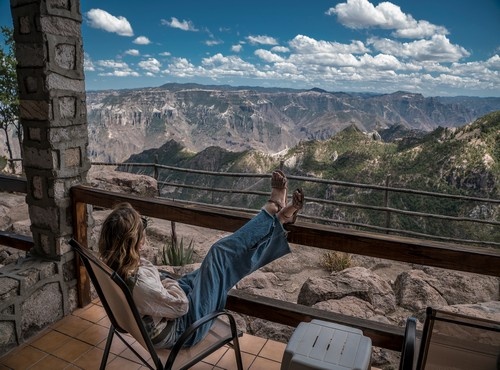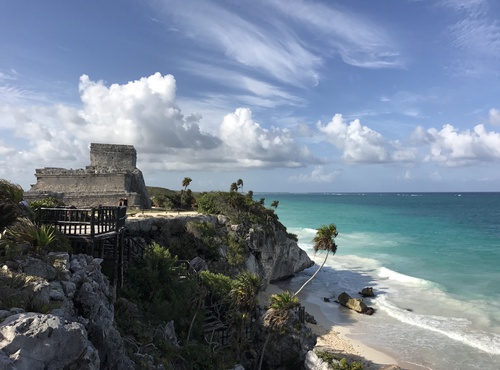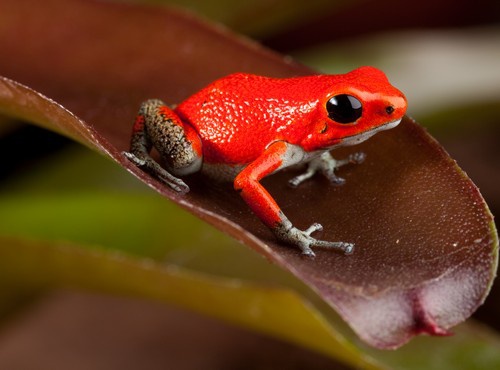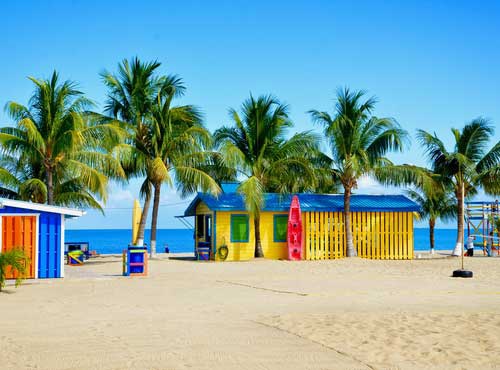
Written by:undefined undefined
Published: 09-12-2021
Ecuador is home to 152 different species of hummingbirds, which is pretty impressive for such a small, country! Hummingbirds can be spotted everywhere on the mainland of Ecuador. These tiny creatures seem to over in thin air, because they actually do! Their rapid wing beat being responsible and there are many places to visit in the country to see these tiny creatures in their natural habitat.
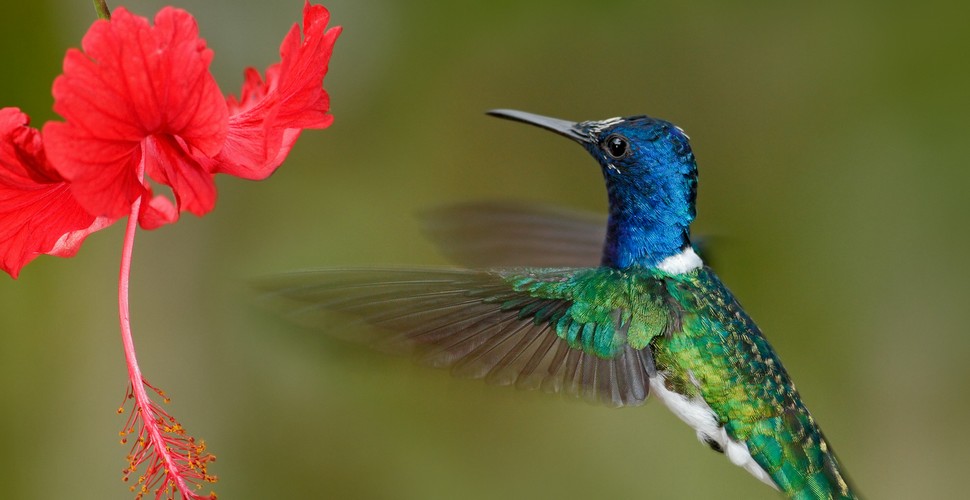
Green and blue hummingbird
The Ecuadorian Sierra
Along the backbone of the northern Sierra, there are a number of places to spot hummingbirds but only a few make it easy to do so. The majority of sites have small hummingbird gardens to attract the birds, increasing your chances of seeing a number of species on a single visit.

Purple throated wood star
San Jorge de Quito
The San Jorge de Quito lodge is located on the outskirts of the capital city along the road to Mindo. The property, once a working hacienda, with ancient buildings, a bullfighting ring, and beautifully-kept gardens. The lodge is now a hummingbirds haven, due to the flowering plants and the strategically placed sugar feeders in the lodges grounds. Popular species to be found here are the Sword-Billed Hummingbird, the Tyrian Metal tail, the Sparkling Violetear, and the Shining Sunbeam.

Mindo
Reserva Yanacocha
To the west of the Pichincha Volcano, the Jocotoco Foundation runs a small nature reserve called Yanacocha. With a myriad of hiking trails through primary cloud forest and excellent views over the Pacific coast, this is a great place to see hummingbirds. About an hour hike from the main entrance, lies a small hummingbird garden which regularly attracts the Sapphire-vented Puffleg, the Golden-breasted Puffleg, the Great Sapphire wing, the Buff-winged Starfrontlet, and the Sword-billed Hummingbird.
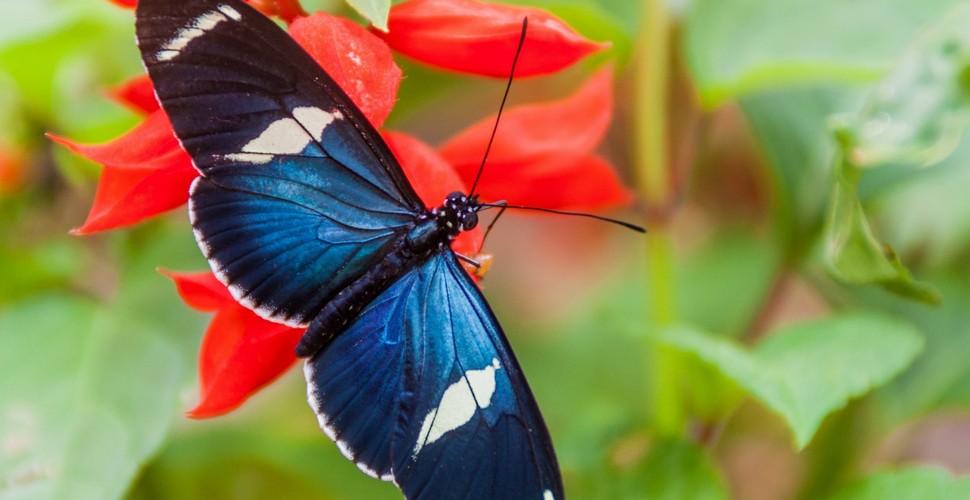
Butterfly at the Yanacocha reserve
Reserva Antisanilla
On the backroads from Quito, driving past Pintag to Lago Mica you’ll find another small nature reserve operated by the Jocotoco Foundation called the Reserva Antisanilla. Their overlook on the roadside is intended to maximize opportunities to see Andean Condors; but hummingbirds are attracted to the vegetation just below the wooden walkway. Often you can spot the Sparkling Violetear, the Giant Hummingbird, and the Black-tailed Trainbearer who come here to feed.
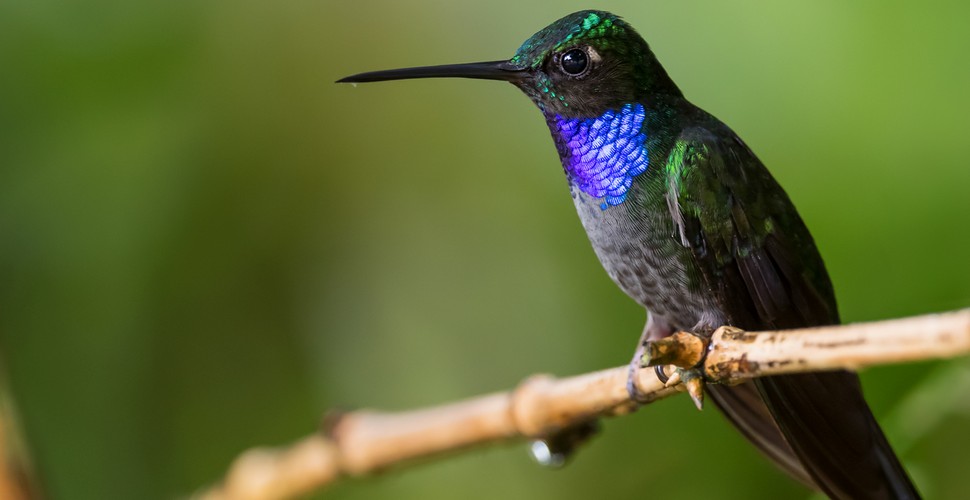
Violetear Hummingbird
The Western Andes
There are mountainsides are full of primary cloud forest in this part of the Andes. Heading out from Quito towards the Pacific Coast you can find each of these locations in turn. Several of the hummingbird species listed can be seen at all three sites as well as others, not mentioned here:

green hummingbirds
Tandayapa
The valley of Tandayapa is a paradise for ornithologists. Several lodges in the area, including the Bellavista Lodge, San Jorge de Tandayapa Eco-lodge, and the Tandayapa Lodge, all have feeders to attract a wide variety of hummingbirds. You can make a day trip from Quito, or spend a day or two here at one of the lodges, observing these magnificent birds. Regular sightings are the Booted Racket-tail Hummingbird, the Violet-tailed Sylph, the White-bellied Woodstar, the Fawn Breasted Brilliant, and all three species of Violet-ears.
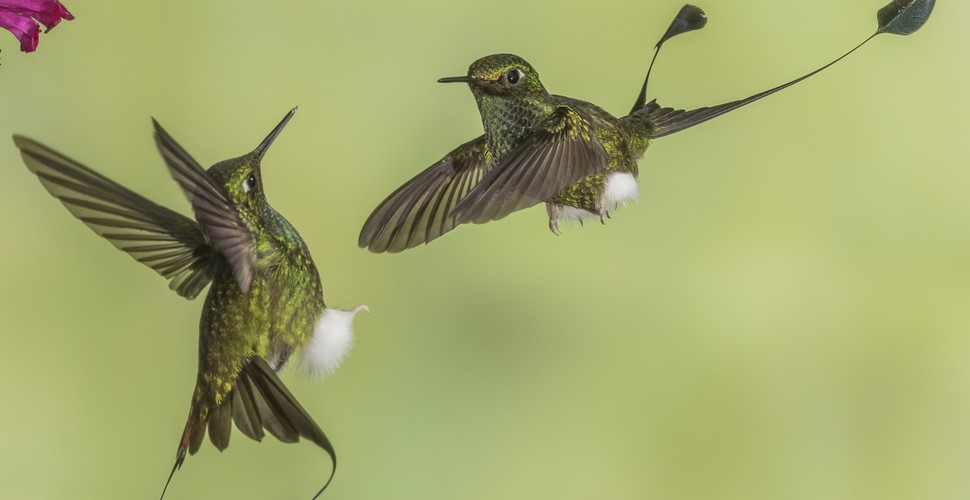
Raquet tail Hummingbirds
Mindo
Mindo is famous for birdwatching and tourism has been a side product of this. Several small cafes, restaurants, lodges and guesthouses, have feeders to attract a wide array of hummingbirds to the area. A small lodge outside of Mindo, called Angel Paz Reserve, is a great place to spot. The usual suspects of Mindo can be seen here, including the Emerald Brilliant, the Booted Racket-tail, the White Whiskered Hermit, the White-necked Jacobin, the Velvet-purple Coronet, and the Collared Inca.

Cola escarpada Hummingbird
Milpe
San Jose de Milpe is home to several birding lodges, including San Jorge de Milpe Eco-Lodge, a hidden treasure, in the Mindo Cloud Forest. The climate here is warmer and the forest is subtropical, humid, due to its lower elevation, perfect for spotting other species than the higher elevation cloud forests of Tandayapa and Mindo. A great place to spot the Green Thorntail, the Andean Emerald, the Purple-bibbed Whitetip, the Green-crowned Wood nymph and Rufous-tailed Hummingbird.
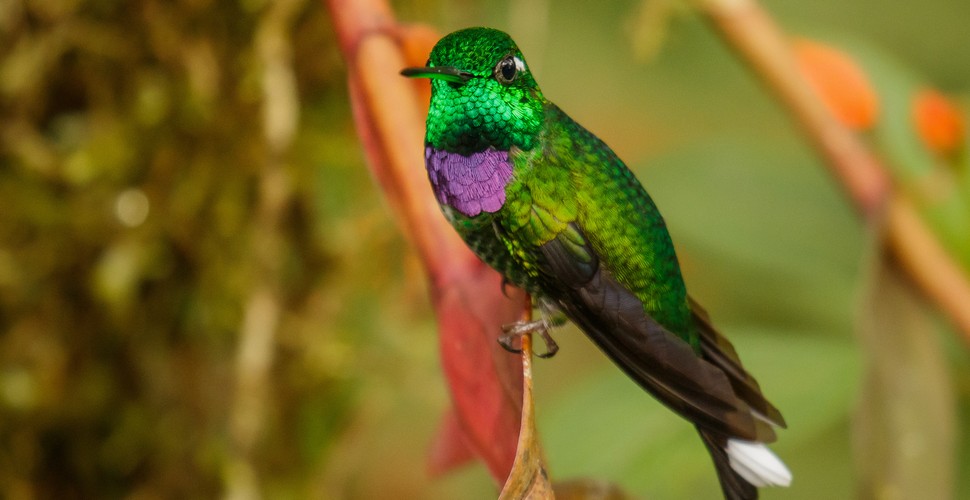
Purple-bibbed white tip
East Slope of the Ecuadorian Andes
The primary cloud forests of the Eastern Andes eventually end in the subtropical jungles of the Amazon Basin. Heading out of Quito past Papallacta into the Napo Province, you will find each of these locations along the way.

Orchid in the cloud forest
Papallacta
Papallacta is famous for its hot springs. The warm waters attract visitors of both the human and hummingbird kind. While relaxing in the bubbling water, you just might see a Sword-billed Hummingbird, a Shining Sunbeam, or a Sparkling Violet-ear, visiting the nearby plants. The small Guango Lodge just a short distance away is the lodge to head to for virtually guaranteed sightings. Their small garden is a magnet to several cloud forest species like the Glowing Puffleg Hummingbird.

hummingbird about to feed
Cosanga
The town of Cosanga is popular with bird watchers, however It is more difficult to find locations with feeders, thus attracting fewer hummingbirds, but the Cabañas San Isidro and the Yanayacu Biological Station a little further down the road, are excellent places to view hummingbirds. Common species include the Long-tailed Sylph, the Chestnut-breasted Coronet, the Collared-Inca, the Bronzy Inca, and the Fawn-breasted Brilliant.

Chesnut breasted Coronet
Pacto Sumaco
The Wild sumaco Lodge is the only birdwatching lodge in the region of Pacto Sumaco. This non-profit enterprise and community project protect the hummingbirds endangered habitat. It has several hummingbird viewing points where you can see the Wire-crested Thorntail Hummingbird, the Booted-Racket tail, the Many-spotted Hummingbird, the Violet-headed Hummingbird, and the Golden-tailed Sapphire.








